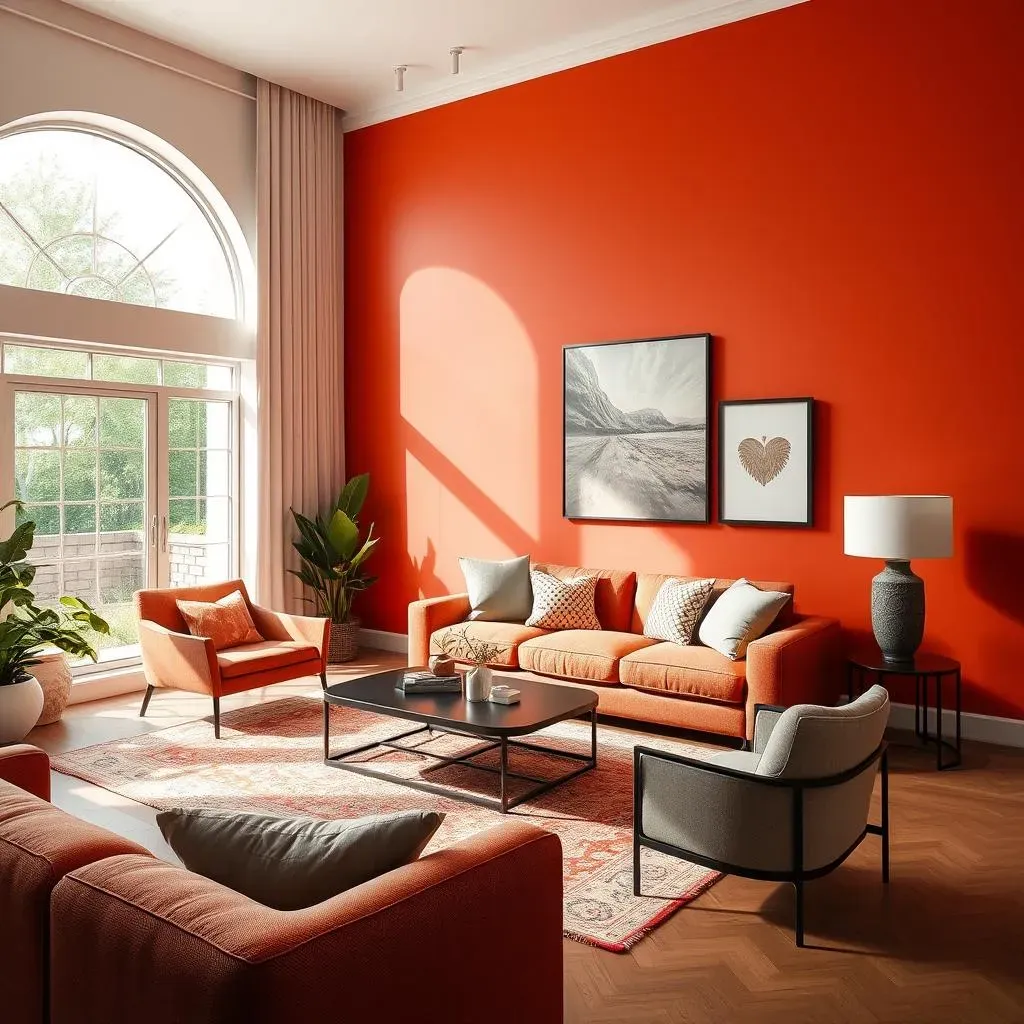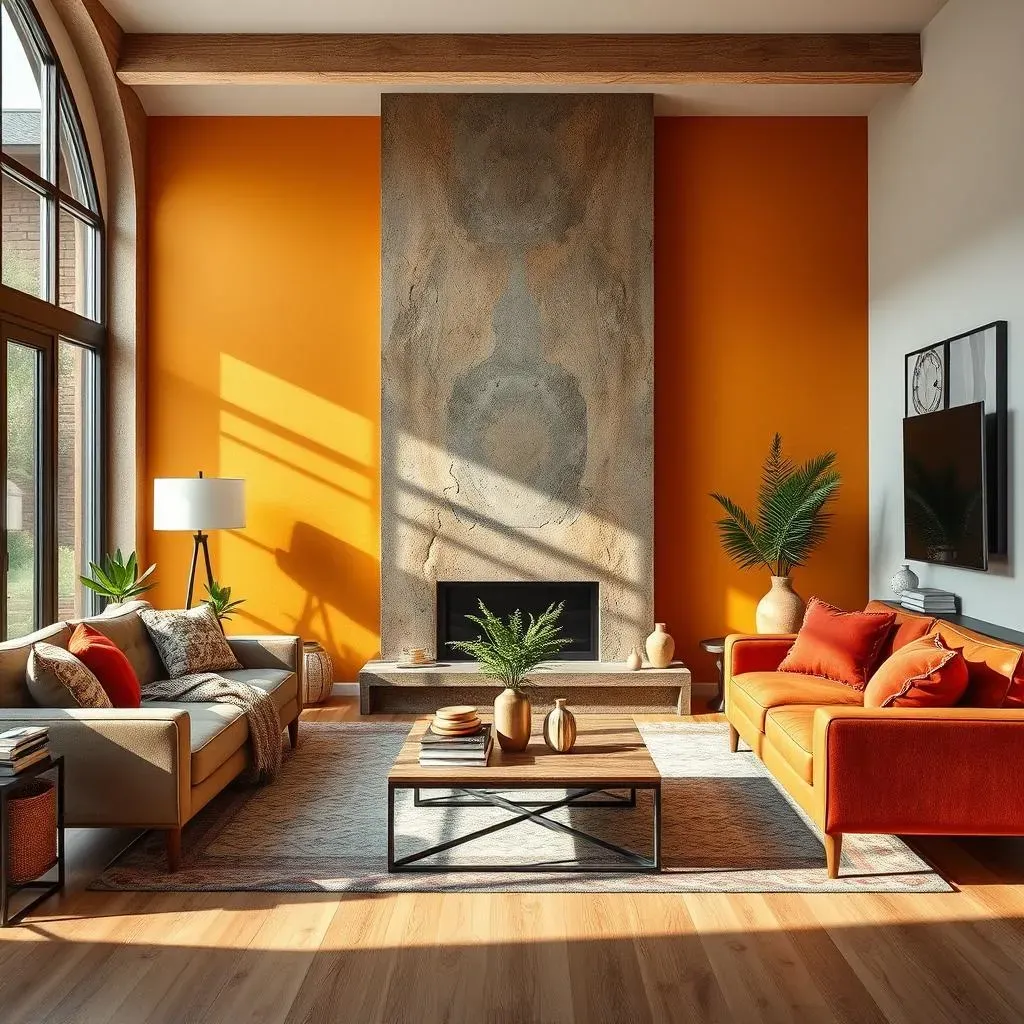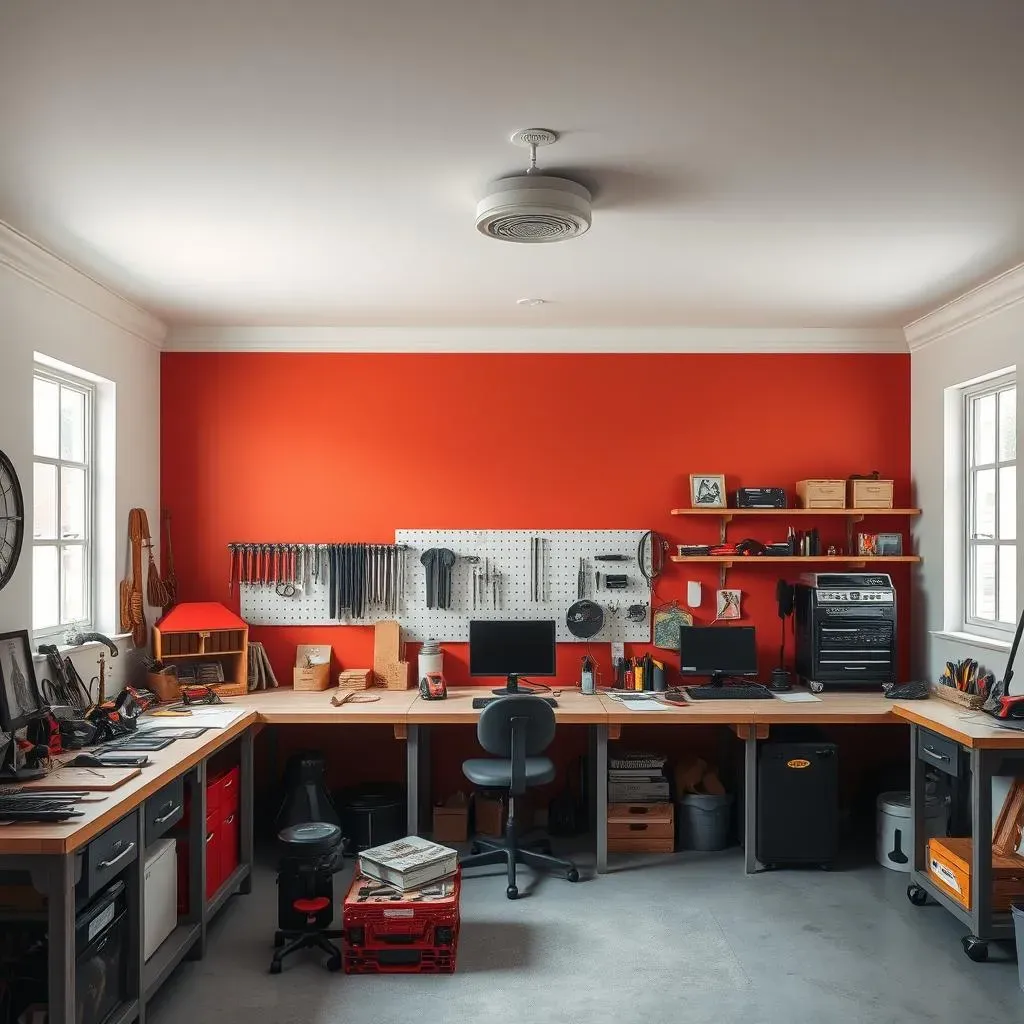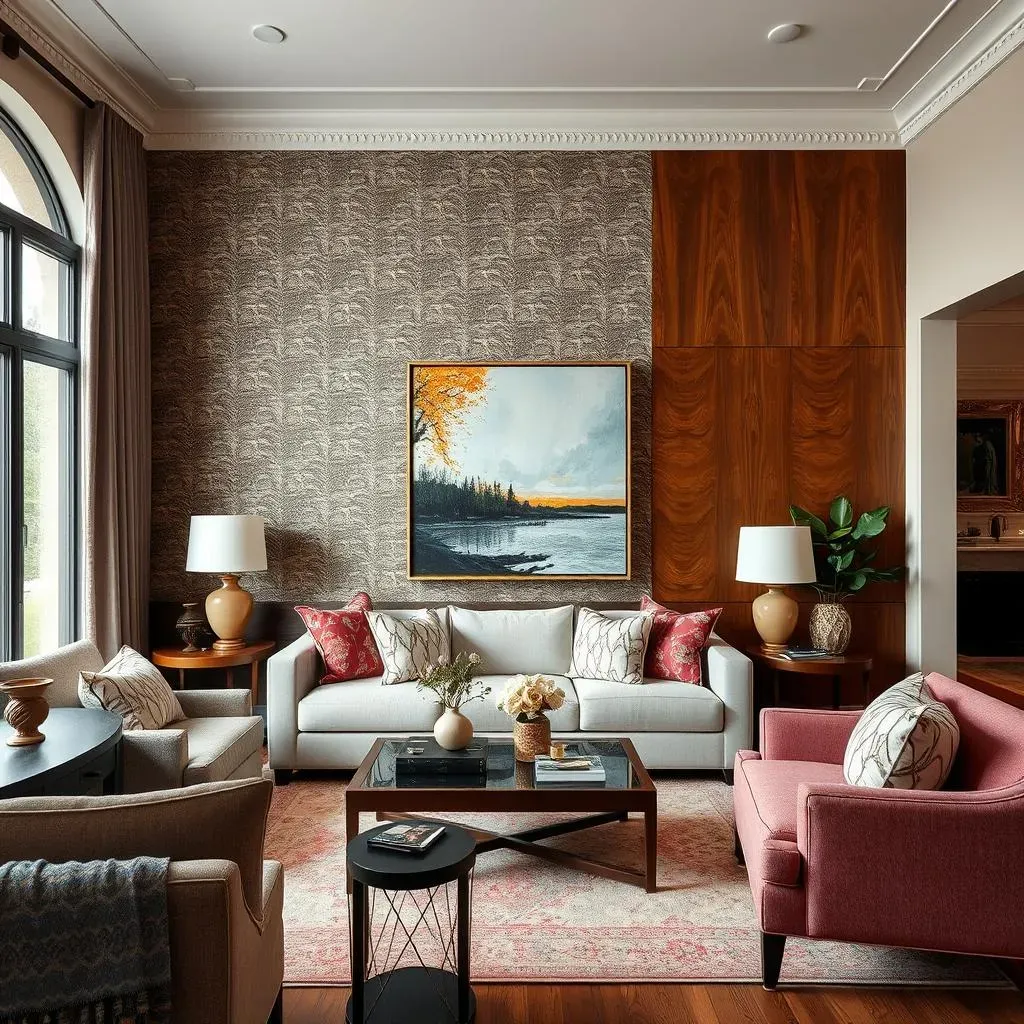Table of Contents
Ever walked into a room and felt like something was missing? Maybe it's a dash of personality, a splash of color, or just a focal point to catch the eye. That's where the magic of an accent wall comes in! It's not just about slapping on some paint; it's about crafting a space that reflects you. But where do you even start? What wall should you choose? And more importantly, what to use for accent wall that will make your vision a reality? Don't worry, I've been there, staring at four blank walls, wondering the same thing. In this article, we'll walk through the process of selecting the right wall to highlight, figuring out which style suits your vibe, and what tools and materials you'll need to get the job done. We'll explore all sorts of options, from classic paint to textured wall panels, and even some creative alternatives that don't require a toolbox. Get ready to transform your room and make a statement, one accent wall at a time.
Picking the Perfect Wall for Your Accent

Picking the Perfect Wall for Your Accent
The Main Event
So, you're itching to create an accent wall, that's awesome! But, hold up, before you grab that paint, let's chat about picking the right wall. It's not just about choosing any old wall, it's about finding the one that will make the most impact. Think of it like choosing the lead singer for a band – they've got to stand out, right? Usually, the best wall is the one that’s the focal point of the room. It’s the wall your eyes naturally gravitate towards when you walk in. It could be the wall behind your bed, the one with the fireplace, or even the one with the biggest window. There aren't any strict rules, but you want a wall that has the space to shine.
I remember when I first tried this, I picked the smallest wall in my living room. It just looked like a random patch of color, not an accent! So, learn from my mistakes, bigger isn't always better, but in this case, it is. Take a good look around and ask yourself, "Which wall is already drawing attention?".
Here's a little tip: If you're still unsure, try taking a photo of your room. What wall stands out in the picture? That's probably your accent wall candidate.
Considering Room Layout
Now, let's think about the layout of your room. Is it long and narrow, or more of a square? The shape of your room can influence which wall is the best choice. For example, in a long, narrow room, an accent wall at the far end can help make the room feel less like a bowling alley and more like a cozy space. On the other hand, in a square room, you might want to pick a wall that is opposite the main entrance to draw people into the space.
Also consider any existing architectural features. A wall with a built-in bookshelf or a unique architectural detail could be a great option, as it already has some visual interest. This makes the wall less of a blank canvas and more of a starting point for your design.
Don't Forget About Function
Lastly, think about the function of the room. Is it a bedroom, a living room, or a home office? The purpose of the room can help guide your choice. For example, in a bedroom, the wall behind your bed is often a good choice, as it helps create a focal point and adds a sense of coziness. In a living room, you might want to choose the wall behind the sofa, as it is often the largest and most prominent wall. And in a home office, you might want to choose a wall that is not directly behind your computer screen, to avoid any distractions.
Also, think about where the natural light is coming from. A wall that gets a lot of natural light could be a great option for a bold color, while a wall that is in a darker corner might benefit from a lighter shade. Remember, the goal is to enhance your space, not fight against it. Picking the perfect wall is the first step to creating a stunning accent wall that you'll love for years to come.
Room Type | Suggested Accent Wall | Reason |
|---|---|---|
Bedroom | Wall behind the bed | Creates a focal point and coziness |
Living Room | Wall behind the sofa | Often the largest and most prominent |
Home Office | Wall opposite the computer screen | Avoids distractions |
Finding Your Style: What Accent Wall is Right for You?

Finding Your Style: What Accent Wall is Right for You?
Match Your Mood
so you've got your wall picked out, now let's talk style. This is where things get fun! The type of accent wall you choose should totally vibe with the rest of your room and, more importantly, with your personal taste. Think of it like picking an outfit – you wouldn't wear a ball gown to the gym, right? The same goes for your walls. Are you into sleek and modern, cozy and rustic, or maybe something a little more bold and eclectic? Figuring this out is key to making your accent wall a true reflection of you.
I've seen people go wild with crazy patterns and bright colors, and it looks amazing because it matches their personality. On the flip side, I've seen super calming rooms with subtle textures that are just as impactful. The key is to be true to your style, don't just follow the trends. If you're not sure where to start, Pinterest is your best friend. It's like a giant mood board for your walls.
Color Me Happy (or Calm)
Let's talk color. This is a big one. Do you want your accent wall to be a bold statement or a subtle backdrop? Bright colors can add energy and excitement to a room, but they can also be a bit overwhelming if you're not careful. Think about the overall feel you want to create. Do you want a space that feels vibrant and lively, or one that feels calm and relaxing? If you're unsure, try testing out paint samples on your wall before committing to a full gallon. Trust me, that tiny square on a paint chip can look very different on an entire wall. I once painted a wall a bright orange thinking it would be fun, and it ended up looking like a giant traffic cone. Learn from my mistakes, sample colors first!
Don't be afraid to experiment with different shades and tones. You can also use the color wheel to find complementary colors that will make your accent wall pop. Or go for a monochromatic look, using different shades of the same color for a more subtle impact. The possibilities are endless!
Texture and Patterns: Beyond Paint
Now, let’s move past just paint. Accent walls can be more than just a solid color. Texture and patterns can add a whole new dimension to your room. Think about using wallpaper with a bold print, or adding wooden panels for a rustic feel. You can also use molding to create geometric patterns or install brick veneer for an industrial look. There's a whole world of possibilities out there, so don't be afraid to get creative. I once saw a wall covered in cork board, and it looked awesome. It was functional and stylish at the same time, a win-win!
When considering patterns, think about the scale of your room. A small room might get overwhelmed by a large, busy pattern, while a large room might need a bolder pattern to make an impact. And remember, texture can add depth and interest even if you're sticking to a neutral color palette. It's all about finding the right balance.
Style | Material Ideas | Vibe |
|---|---|---|
Modern | Geometric Wallpaper, Metal Panels | Sleek, Minimalist |
Rustic | Wooden Planks, Brick Veneer | Cozy, Natural |
Eclectic | Bold Wallpaper, Cork Board | Unique, Playful |
Keeping it Cohesive
Finally, it's super important that your accent wall doesn't feel like it's from a different planet. It should tie into the rest of your decor. Think about the colors of your furniture, your rugs, and your accessories. Does your accent wall complement these items, or does it clash? If you're not sure, try taking a picture of your room and playing around with different color options using an online tool. This can help you visualize how your accent wall will look in the space. I always try to pick a color that's already present in the room, even if it's just a small accent in a pillow or a piece of art. It helps create a sense of cohesion and makes the whole room feel more put-together.
Remember, your accent wall is just one piece of the puzzle. It should work with the other elements in your room to create a space that is both stylish and comfortable. And most importantly, it should be a space that you love to spend time in.
Tools and Tricks: What to Use for Accent Wall Installation

Tools and Tricks: What to Use for Accent Wall Installation
The Essential Toolkit
so you've got your wall picked, your style nailed down, now let's get to the nitty-gritty: the tools you'll need. It’s like preparing for a big cookout; you wouldn't try to grill without a grill, right? The same goes for your accent wall. The tools you'll need really depend on what type of accent wall you’re creating. If you're just painting, you'll need the basics: brushes, rollers, painter's tape, drop cloths, and maybe a ladder if you’ve got high ceilings. But, if you're getting fancy with wood panels or wallpaper, things get a little more interesting. You might need a saw, a level, a measuring tape, and a nail gun. Don't worry if you don't have all these tools, you can always borrow them or rent them. I know I had to borrow my neighbor's saw for my first project, and he even helped me out with the measuring, which was a huge plus.
I always say, having the right tools makes the job way easier and more fun, it’s like having a good teammate. Don't try to skimp on this, because you'll end up regretting it later. Trust me, I've tried to paint a wall with a cheap brush, and it just doesn't work. You end up with streaks and uneven coverage, it’s a mess.
Tool | Use |
|---|---|
Paintbrushes & Rollers | Applying paint |
Painter's Tape | Creating clean lines |
Drop Cloths | Protecting floors and furniture |
Level | Ensuring straight lines |
Measuring Tape | Accurate measurements |
Power Tools vs. Alternatives
Now, let’s talk power tools. A miter saw and nail gun can make installing wood panels a breeze, but they're not essential. If you're not comfortable with power tools, or don’t have access to them, there are plenty of alternative options. Peel-and-stick wallpaper is a fantastic way to add patterns or textures without any fuss. Or, if you're feeling artistic, you can even use a Sharpie to create geometric designs directly on the wall. I've seen some amazing accent walls done with just a Sharpie and a ruler, it's incredible what you can achieve with a little creativity. The key is to choose a method that you feel comfortable with and that fits within your budget. Remember, the goal is to have fun and create a space that you love.
Don't let the fear of not having the "right" tools stop you from creating the accent wall of your dreams. There's always a workaround, and sometimes the most creative solutions come from working with what you have. And hey, if you do decide to try out those power tools, make sure you watch some tutorials and wear safety gear. Safety first, always!
Prep Work is Key
Before you start slapping on paint or nailing up panels, it’s important to prep your wall. This means cleaning the surface, filling any holes or cracks, and sanding it down if necessary. Think of it like preparing a canvas for a painting. You wouldn't paint on a dirty, bumpy surface, right? The same goes for your walls. This step might not seem like much, but it can make a huge difference in the final result. A smooth, clean surface will ensure that your paint or wallpaper goes on evenly and looks its best. I know it can be tempting to skip this step, especially when you're excited to get started, but trust me, it's worth the extra time. I once tried to wallpaper a wall without cleaning it first, and it ended up looking like a lumpy mess. The wallpaper didn’t stick properly and I had to redo the whole thing.
And, when it comes to taping, don't be shy with the painter's tape. Make sure you create straight, crisp lines, and press the tape down firmly. This will prevent any paint from bleeding through and ruining your crisp lines. And always, always, remove the tape while the paint is still slightly wet, that way you get a perfect edge. A little prep work goes a long way in achieving a professional-looking result.
- Clean the wall with a damp cloth.
- Fill any holes or cracks with spackle.
- Sand the surface until smooth.
- Apply painter's tape for clean lines.
Caulking and Finishing Touches
Last but not least, let’s talk about caulking and finishing touches. If you're installing wood panels or other materials, caulking the seams can help hide any gaps and create a seamless look. It’s like adding the finishing touches to a cake, you know, the frosting and sprinkles, that make it look extra special. And when it comes to paint, don't forget to use a low-sheen finish, like eggshell or matte. This will help minimize the appearance of any texture on the wall. I also like to use a small brush to touch up any areas that need it. These little details can really elevate the look of your accent wall and make it look more polished. It’s all about the little things, the details, that make a big impact. So take your time, and don’t rush the process. The end result will be worth it!
Remember, the goal is to create a space that you love. So have fun with it, experiment, and don’t be afraid to try new things. And if you make a mistake, don’t worry, it’s just a wall. You can always fix it, and learn from the experience. That’s the beauty of DIY, it’s all about the journey, not just the destination.
Wrapping Up Your Accent Wall Adventure
So, there you have it – a complete rundown on what to use for an accent wall. From picking the right wall, to matching your style, and getting your hands dirty with installation, it’s all about making your space truly yours. Whether you’re a fan of the classics or eager to try something new, remember that the best accent wall is one that makes you smile every time you walk into the room. Don't be afraid to experiment, get creative, and most of all, have fun with it! With a little planning and a lot of personality, you can create an accent wall that's not just a visual treat, but a reflection of you.
